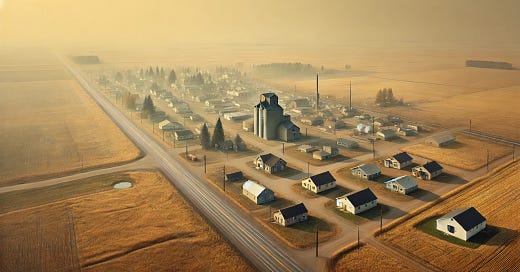Breathing Room: An Air Quality Check for Saskatchewan
Diving into the impact of worsening summer wildfires on Air Quality Health Index (AQHI) readings
Air quality can vary greatly geographically, even within the same province. In this article, I gathered open data on air quality across Saskatchewan, Canada and complete some analysis of the Air Quality Health Index (AQHI). This data available on GeoHub reveals significant differences in air quality across cities, as well as some interesting temporal patterns. Cities like Regina and Saskatoon consistently show higher average AQHI readings (higher indicates poorer air quality), particularly during the wildfire seasons in recent years. While the reasons for these differences remain complex - spanning local meteorology, geography, and human activity — this analysis highlights trends that demand closer attention.
Visualizing AQHI Over Time
After discussing the 2023 wildfire season in my last article, I was interested to know if all those wildfires had significant impacts on air quality measures in Canada. My impression certainly was that I spent more time indoors waiting out smoke plumes than I recall ever doing before, however, this author and astute readers alike know that we should always let intution guide our curiosity, but always question that intution and answer it with data. Furthermore, I thought a visualization of hourly data like air quality would be sorta fun to do in a style like GitHub uses for tracking daily code contributions for members 😉.
The image below, which highlights days with poorer air quality readings in darker colours, does indicate the effect of that substantial wildfire season we experienced in 2023. We can also see that the years 2023 and 2024 have somewhat more darker shaded days (poorer air quality) than either 2020, 2021, or 2022 - especially in the summer months.
As much as I enjoyed creating the calendar heatmap style visualization above, I must say that it doesn't do a great job of highlighting temporal patterns here. I think this is because AQHI is fairly constant throughout the year and it spikes relatively infrequently. In fact, while the average air quality health index reading showed statistically significant differences between the cities contained in this dataset (Buffalo Narrows, Prince Albert, Regina, Saskatoon, and Swift Current) these averages all ranged between 2 and 2.5, which is well within the "healthy" range for air quality and doesn't highlight any practical difference for me.
If the calendar heatmap visual didn't quite do the trick to highlight short-run outliers on a longer time-scale, I found that this scatterplot below did a much better job of showing when air quality was poorest in Saskatchewan, with the main take-away being that, yes, that 2023 wildfire season was particularly bad. I’d note that if there is a meaningful trend in air quality readings, it’s fairly well hidden. Rather, than an increasing trend, the worsening air quality readings in Saskatchewan are due to an increased variance that’s concentrated in summer months and directly fuelled by smoke from wildfires.
Going deeper into the Air Quality Health Index
I'm not going to describe how the AQHI is calculated here, but if one is interested, the Wikipedia article on the topic is a great place to start and one can follow some of the linked references at the bottom to go deeper. What is important to know is that there are three things that go into the calculation of the index:
Ozone
Nitrogen Dioxide
Fine Particulate Matter (PM2.5)
The first two are created, generally, by burning fossil fuels for things like driving vehicles or for industrial purposes. As such, urban areas usually have higher levels of ground level Ozone and Nitrogen Dioxide, however, these can also be found in high concentrations in rural areas too due as wind moves these pollutants around. As someone who spends more time than average consuming data around me, I have observed a handful of days during the winter where the Air Quality Health Index spikes up into the moderate range and this intrigued me because we should have little air quality impact from forest fires or agriculture during that period. Indeed, there are times when Ozone can cause worsen air quality readings, however, these are much less impactful than fine particulate matter (smoke, dust, and smog) and both Ozone and Nitrogen Dioxide levels remain fairly consistent throughtout the year.
Bottom line
Air quality data tells a story of the increasing environmental challenges Canada faces should the driving factors - increasing wildfires - continue unabated. While Saskatchewan's cities face unique air quality patterns, the general worsening of AQHI over recent years signals broader issues that we as Canadians are going to need to understand and adapt to. In 2023, both Regina and Saskatoon, Saskatchewan's largest cities, each experience nearly a month's worth of days with "moderate" health risks associated with poor air quality (AQHI greater than 4) and about a week's worth of days with average air quality readings that would be categorized as a "high" or "very high" health risk. Please take care to pay attention to air quality warnings this summer if you, like me, enjoy spending a lot of time outdoors.
What next?
If this analysis resonates with you, share it with someone who cares about the air they breathe. Let’s make air quality data part of everyday conversations.





